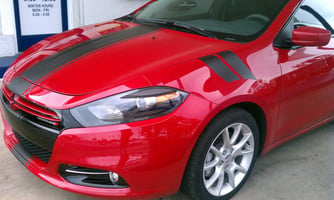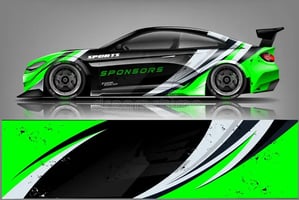Rally stripes, also known as racing stripes, have a rich history in the automotive world,...
The Street Racing World: An Inside Look
Street racing, an adrenaline-pumping subculture rooted in automotive passion and speed, has captivated enthusiasts worldwide for decades. This underground phenomenon blends the thrill of high-speed driving with the artistry of customizing cars for maximum performance. Not denying that its time to be the loyal follower of the heart of street racing, exploring its allure, risks, and impact on the automotive scene.
At the core of street racing is the quest for speed. Enthusiasts meticulously modify their vehicles, pushing them to the limits to achieve unparalleled acceleration and top speeds. From engine upgrades and turbocharging to aerodynamic enhancements and lightweight materials, every modification serves a singular purpose: to dominate the asphalt and outpace the competition.
One iconic aspect of street racing is the diverse array of cars that grace the scene. Japanese imports like the Nissan Skyline GT-R, Toyota Supra, and Honda Civic Type R are revered for their agility and aftermarket potential. American muscle cars such as the Ford Mustang, Chevrolet Camaro, and Dodge Challenger boast raw power and roaring engines, making them formidable contenders on the street circuit. European gems like the BMW M3, Audi RS models, and Porsche 911 add a touch of sophistication and precision to the mix.
However, the allure of street racing goes beyond mere horsepower and acceleration. It embodies a culture of camaraderie, where fellow enthusiasts come together to share their passion for cars and competition. Car meets, cruises, and impromptu races create a sense of community among like-minded individuals, fostering friendships and rivalries alike.
Yet, with its thrills come inherent risks. Street racing, often conducted on public roads, poses significant dangers to participants and bystanders. The absence of safety measures and controlled environments increases the likelihood of accidents, injuries, and legal consequences. Law enforcement agencies worldwide crackdown on illegal racing activities, imposing hefty fines, license suspensions, and even imprisonment in extreme cases.
The impact of street racing extends beyond the asphalt, influencing popular culture, media, and automotive trends. Movies like “The Fast and the Furious” franchise have immortalized the adrenaline-fueled world of street racing, showcasing exotic cars, daring stunts, and intense rivalries on the silver screen. Video games like “Need for Speed” and “Gran Turismo” allow enthusiasts to experience the thrill of high-speed racing virtually, further fueling their passion for automotive performance.
In recent years, the rise of electric vehicles (EVs) has sparked debates about their role in the street racing scene. While traditional petrol-powered cars dominate the landscape, EVs offer instant torque, silent acceleration, and potential performance upgrades that appeal to tech-savvy racers. The growing popularity of EV drag racing events and modified electric cars underscores this evolving shift in the automotive realm.
Ultimately, street racing remains a captivating yet controversial aspect of car culture. Its blend of speed, customization, and community continues to attract car enthusiast worldwide, pushing the boundaries of automotive innovation and excitement. As the landscape evolves with new technologies and regulations, the spirit of street racing perseveres, fueling the passion of those who live life in the fast lane.


